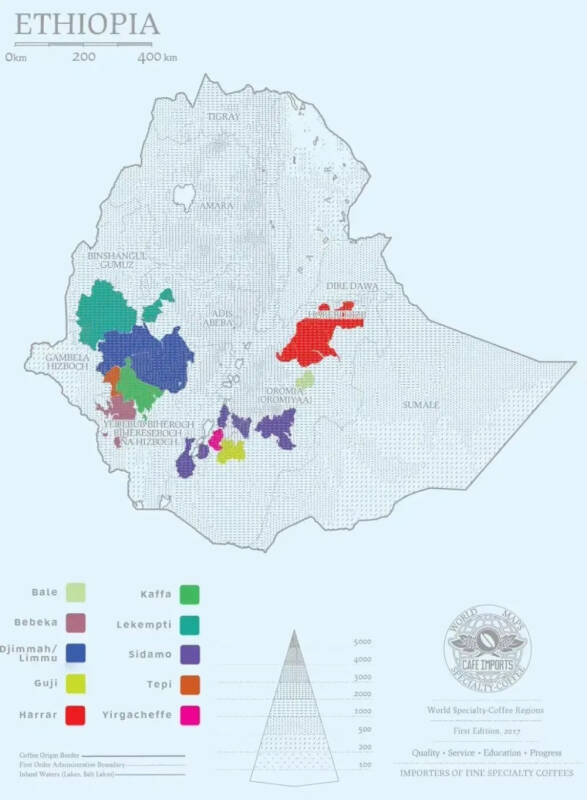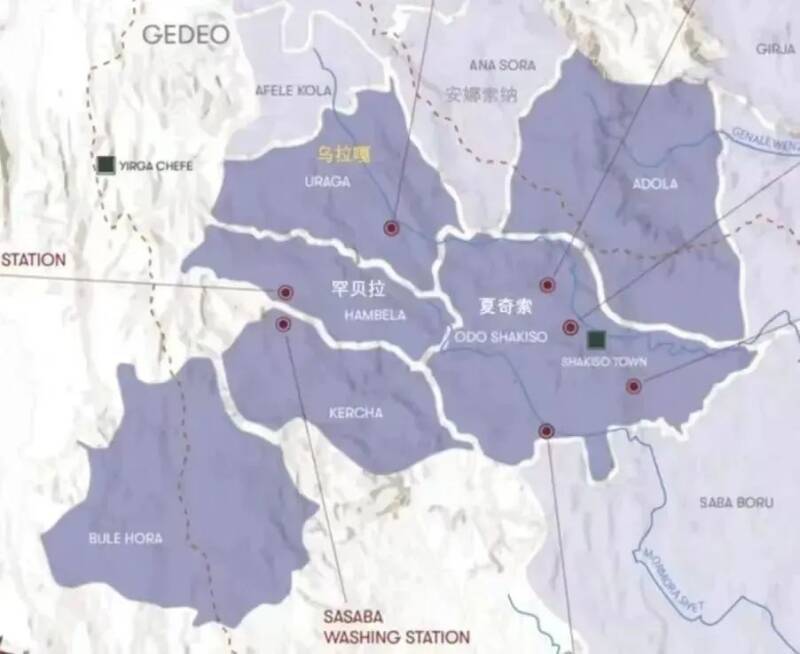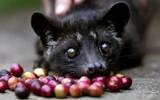What are the characteristics of the Guji production area in Ethiopia? What kind of coffee beans are Huakui?
When it comes to African coffee, everyone will think of Ethiopia, all because Ethiopian coffee is well known in the global coffee market. It is recognized as the birthplace of coffee and the largest coffee gene pool in the world. There are many varieties of coffee. It is estimated that there are about 15000 varieties of coffee in Ethiopia.
At present, Ethiopia, the largest Arabica coffee producer in Africa, benefits from Ethiopia's unique natural conditions for growing coffee. Located in northeastern Africa, mainly mountains and plateaus, most of them belong to the Ethiopian plateau and are run through the East African Rift Valley, flanked by mountains and volcanoes with an average elevation of nearly 3000 meters. Although Ethiopia is in the tropics, due to the influence of high altitude, the annual temperature in the country is about 16 ℃, and there is a large temperature difference between day and night, which can make the coffee grow longer and have more flavor.
At present, Ethiopia is divided into 12 states, 2 autonomous administrative regions and 10 coffee producing areas, among which many world-famous coffee producing areas, such as Sidamo, Jima, Haller, Guji and Yirgacheffe, etc., among which Guji and Yegashafi originally belonged to Sidamo, and became an independent coffee producing area because of their unique flavor.

Yega Xuefei used to belong to a sub-producing area of Sidamo Coffee, and it also belongs to Sidama in the administrative division of Ethiopia, but because of its unique flavor of rising white flowers, clear lemon acidity and fresh green tea, it has become an independent coffee producing area.
In the Qianjie coffee rations bean series, also includes Ethiopia this well-known producing area Yega Xuefei coffee beans, using the original species (Heirloom), the use of washing treatment, floral flavor, citrus, berry flavor, lemon-like acidity, refreshing taste.
Gucci, like Yega Xuefei, was previously a sub-region of Sidamo, which was independently classified as a new region by the Ethiopian Commodity Exchange (ECX) in 2010 because of its excellent and recognizable flavor. In the administrative division of Ethiopia, Guji belongs to Oromoya, whose name comes from a tribe here. The Guji producing area is located in the southeast of Yejassefi, where the terrain is complex and changeable, with many mountains, valleys and plains, with an average elevation of 1800 meters, which create a variety of microclimate. At present, Guji producing areas are also divided into a number of sub-producing areas, the most famous of which are Hambella, Uraga and Shakiso.

Among them, the Hambella sub-producing area is the most well-known, which is one of the higher-altitude sub-producing areas in Ethiopia, coffee cultivation is as high as 2100-2300 meters, the area has dense forests and fertile soil rich in minerals, which is very suitable for coffee cultivation.
In 2017, the Ethiopian DW Coffee Company selected sun-dried coffee beans from the Buku Abel processing plant in the town of Dimtu in Humbelazi to participate in the raw bean competition TOH organized by the African Fine Coffee Association, which won the championship of the sun group with its strong berry aroma and creamy texture. Then, in the same year, the winning batch of coffee was purchased by a raw bean trader in Beijing and named "Sakuran" to launch on the domestic market. And was selected by a Chinese coffee brewing contest player to participate in the competition, although only won the runner-up, but the "Sakuran" reputation began to be well known in China.
Due to the increasing popularity and demand of "Huakui", DW has set up five independent drying stations for raw coffee beans in the town of Dimtu, which is the production area of Humbelazi. In addition to Buku Abel, it has also included four small villages such as Buku Saysay, Haro Soresa, Tirtiro Goye and Seke Bokosa to produce coffee beans. Sakuran 2.0 was launched in 2018 and 3.0 in 2019, and the Sakuran X.0 series has been launched every year since then.
In Qianjie coffee, there are also Huakui 8.0 coffee beans produced from this well-known producing area, sun-treated, brewed with dried mango, citrus, jackfruit and other tropical fruit flavors, full of juice, round taste, sweet like black tea, rich in layers.
For more information about coffee producing areas, please scan the code directly and follow: coffee comments.
Long press the QR code to follow:
TRANSLATE with
XEnglishArabicHebrewPolishBulgarianHindiPortugueseCatalanHmong DawRomanianChinese SimplifiedHungarianRussianChinese TraditionalIndonesianSlovakCzechItalianSlovenianDanishJapaneseSpanishDutchKlingonSwedishEnglishKoreanThaiEstonianLatvianTurkishFinnishLithuanianUkrainianFrenchMalayUrduGermanMalteseVietnameseGreekNorwegianWelshHaitian CreolePersian
TRANSLATE with
COPY THE URL BELOW
BackEMBED THE SNIPPET BELOW IN YOUR SITE Bing Webmaster PortalBack
Important Notice :
前街咖啡 FrontStreet Coffee has moved to new addredd:
FrontStreet Coffee Address: 315,Donghua East Road,GuangZhou
Tel:020 38364473
- Prev

The Federal Reserve cuts interest rates for the first time in 4 years! Expected to increase coffee trade
According to the U.S. Federal Reserve Board (Federal Reserve) announced on September 18 that it would implement the first interest rate cut in more than four years, which means that the target range of the federal funds rate was lowered by 50 basis points to a level between 4.75% and 5.00%. It is reported that this is the first time the Federal Reserve has cut interest rates since March 2020.
- Next

"Cat Poop Coffee", is it really cat Poop?
I believe everyone has heard of "Cat Poop Coffee". This coffee, which sounds very strong, can actually be sold at a price comparable to the red label! It couldn't help but make people have a strong interest in its feelings and experiences. So, today let's talk about "cat shit coffee", which is known as the gold in the coffee industry
Related
- What effect does Italian American coffee with filter paper have? Will coffee taste better if it is put on filter paper at the bottom of the powder bowl?
- What is the color difference in coffee beans? What are the characteristics of honey processed coffee beans? Why are the anaerobically treated coffee beans uneven in color?
- How does novice Xiaobai quickly get started and make coffee? Newbies learn to make coffee by hand and share the specific steps and process process!
- Costa tea has a shelf life of 100 years?! Expert: Unable to verify
- It's a huge uproar! American milk addition was rejected by Manner employees?!
- Mocha pot coffee bean recommendations| How fine and how much powder should be used for grinding? What parameter ratios do I need to use to make milk with Mocha pot coffee?
- What are the characteristics of the world's top ten coffee beans treated with Costa Rica honey? How to make black honey kadura from Tarazhu Pilon Processing Plant taste good?
- How to make deep-roasted coffee? What grinding water temperature does authentic Jamaica Blue Mountain No. 1 coffee use to brew it well?
- Selected high-grade rose summer coffee flavor tasting guide Why Panama rose summer has the aroma of flowers and fruits
- What equipment does a novice Xiaobai need to buy to learn to make coffee? Filter cup electronic scale bean grinder manual flushing pot purchase guide

